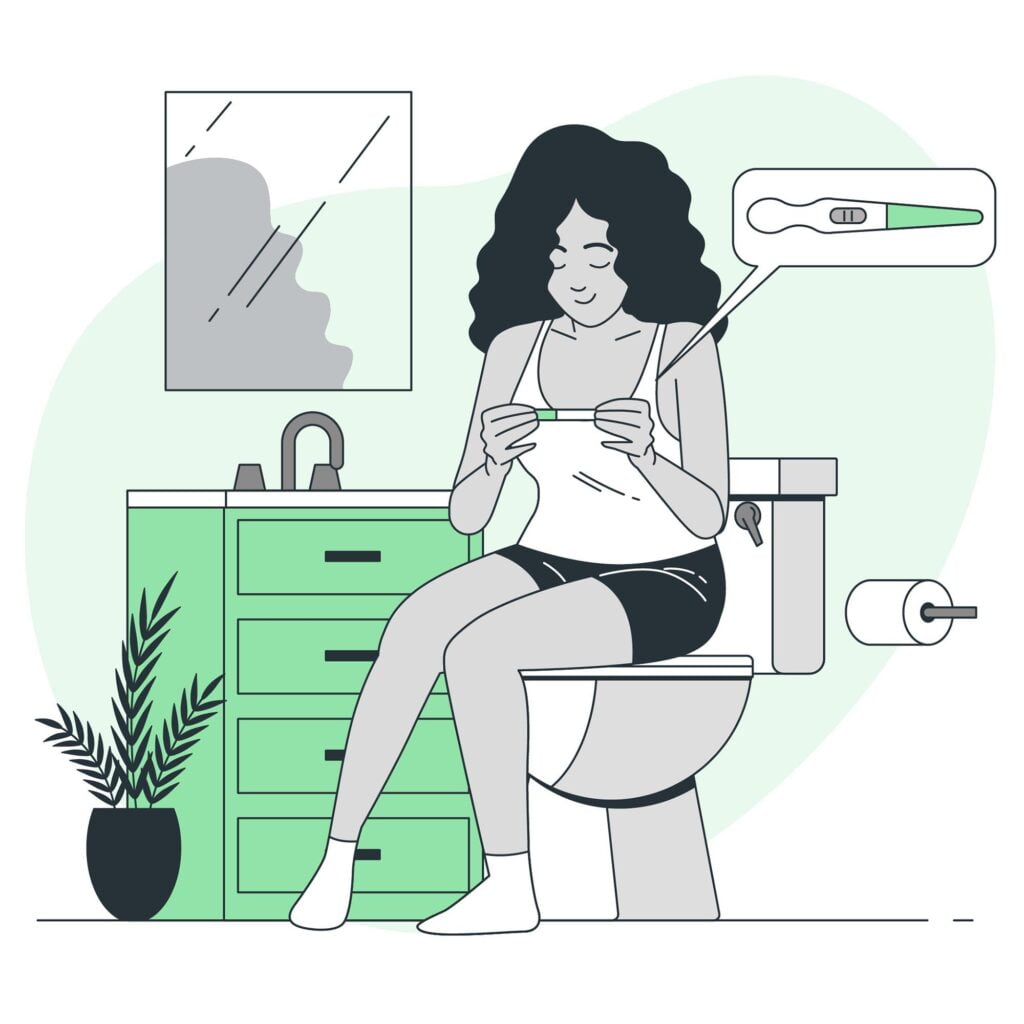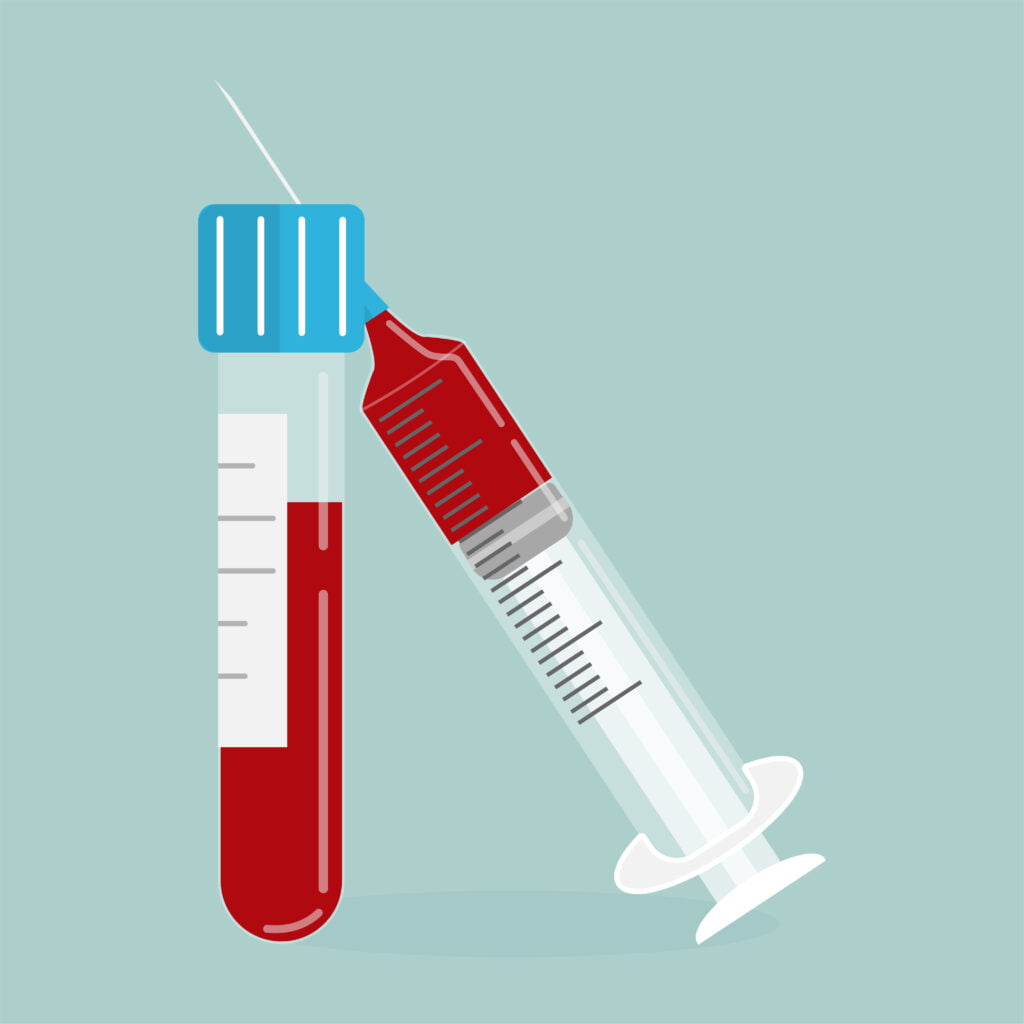A pregnancy test measures the quantity of human chorionic gonadotropin (hCG) in your body to see if you’re pregnant. Your body begins to alter from the beginning of pregnancy to assist the growth of the collection of cells that will evolve into your baby. The creation of hCG is one thing that happens quickly. This molecule is exclusively found in pregnant women, and it begins to build up about 10 days after conception, when the fertilised egg implants in the uterus (womb).
Urine tests and blood tests are the two most common types of pregnancy tests. Using a home pregnancy test kit, you’ll frequently perform a pee test at home. This type of test can be bought over-the-counter (you don’t need a prescription from your doctor) and comes in a variety of price levels. Pregnancy tests are performed at the office of your healthcare professional.
You might take a pregnancy test for a variety of reasons. You might be trying to conceive and hoping for a positive outcome. It’s possible that you’ve had a problem with your birth control. You might even be ready to have a medical procedure or begin a new drug that could be made more difficult by your pregnancy.
Whatever the cause, the best thing you can do if you have any questions about your test findings is to contact your healthcare practitioner. An ultrasound can also be used to confirm a pregnancy. An ultrasound is utilised later in a pregnancy to not only look at your baby, but also to ensure that the development timetable fits the dates of your conception and missing period.
Best time of the cycle to take the test.
When your menstruation is late, it’s the optimum time to take a pregnancy test. You’ll be able to avoid false negatives this way. Proper pregnancy test timing is a great reason to start keeping a fertility calendar if you don’t already have one.
If your cycles are erratic or you don’t track them, wait until you’ve had your longest menstrual cycle before taking a test. If your cycles last 30 to 36 days, for example, the optimal time to test is on day 37 or later.
Another issue to think about is whether you even know if your period is late. Even if they are pregnant, 10 to 20 people out of every 100 will not obtain a positive pregnancy test result on the day they think is soon after their missing period, according to the FDA.
Best time of the day to take the test.
To some extent, the time of day you take a pregnancy test matters. If you take the test first thing in the morning, you’ll obtain a more accurate result.
This is especially true if your period hasn’t arrived yet, or if it’s only a few days late.
The hormone human chorionic gonadotropin (hCG) is detected in your urine by home pregnancy tests.
Your urine is more concentrated when you first wake up unless you get up frequently during the night to pee (or you drink water throughout the night). This indicates that the amount of hCG in your system is larger, and you’re more likely to have a positive result if you’re expecting.
You can, however, take a pregnancy test in the middle of the day or at night. You’re simply more likely to receive a false negative, especially if your period isn’t that late and your pee is diluted from drinking a lot of water.
How does a pregnancy test work?
Understanding how pregnancy tests operate might assist you in determining when to use them. Pregnancy tests show how urine reacts with a sheet of paper that detects the presence of human chorionic gonadotropin (hCG). A single or double line, or a plus or negative sign, is generally used to represent the results.
A home pregnancy test can’t tell you how much pregnancy hormone is in your urine. It can only tell whether a certain amount of anything is present. It can be even more difficult to tell when an accurate time to try an early test is if you have irregular periods.
If you’re receiving fertility treatments, be aware that a false positive pregnancy test, especially one taken early on, may occur. Because pregnancy tests may identify the remnants of fertility drugs like Ovidrel, Pregnyl, or Novarel, this is a concern.
Pregnancy tests with “early findings” offer results three to six days before your missed period. These tests are more sensitive than normal tests, however achieving correct results so early is more difficult due to the variability in ovulation and implantation timings.
Blood tests and urine tests are the two most common types of pregnancy tests.

Pregnancy Blood Test
Blood Test
These are available at your doctor’s office, although they’re not as common as urine tests. These tests can detect pregnancy 6 to 8 days after ovulation, which is earlier than a home pregnancy test. The results take longer to come in than with a home pregnancy test.
The following are the two types of blood pregnancy tests:
A qualitative hCG test merely detects the presence of hCG. It responds to the query “Are you pregnant?” with a “yes” or “no.” These tests are frequently ordered by doctors to confirm pregnancy as soon as 10 days following conception. Some people can detect hCG much earlier than others.
A quantitative hCG test (beta hCG) determines how much hCG is in your blood. It can detect even the tiniest amounts of hCG. These tests may aid in the detection of issues during pregnancy. They may be used in conjunction with other tests to rule out an ectopic pregnancy, in which the fertilised egg implants outside the uterus, or a miscarriage, in which hCG levels drop rapidly.

Urine Test
These can be taken at home or at the doctor’s office.
Home pregnancy tests are not only discreet and convenient, but they are also quick and simple to use. If you follow the instructions, they’re also quite accurate. All of these pregnancy tests work in the same way. You can check your urine in one of the following ways:
- Place the test stick in your urine stream and hold it there.
- Fill a cup halfway with pee and dip the test stick in.
- Collect pee in a cup and transfer it to another container with a dropper.
You’ll have to wait a few minutes for the results to appear.
You can confirm your results by seeing your doctor, who can perform even more sensitive pregnancy tests, after you’ve taken this test.




